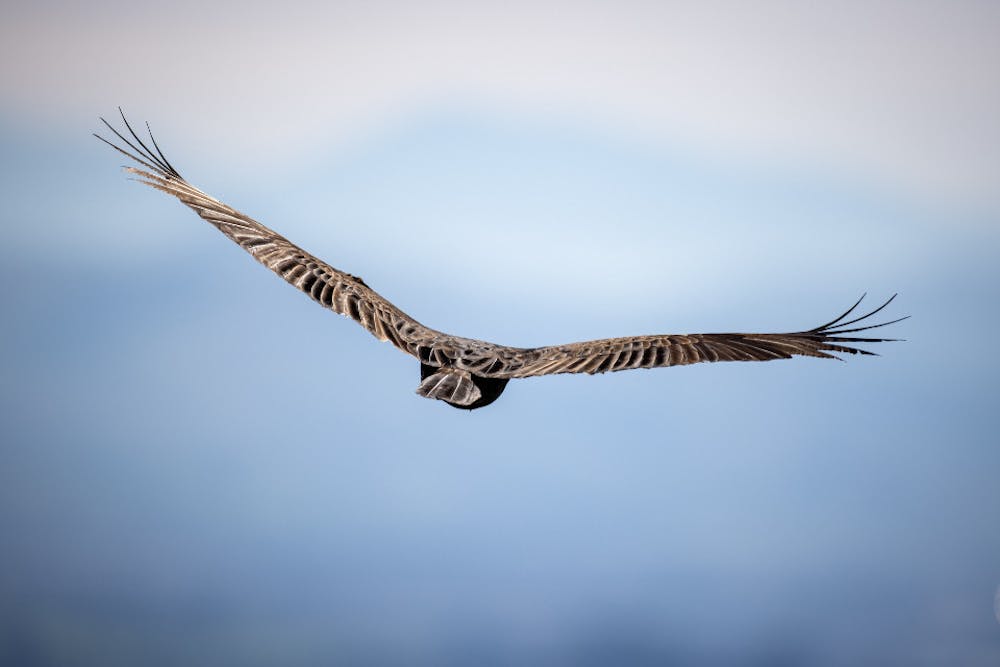Researchers at Hopkins have made significant progress in unraveling the mystery of flight evolution. The findings, published in The Proceedings of The Royal Society, shed light on the evolutionary adaptations that enabled dinosaurs and birds to take to the skies.
Amy Balanoff, the co-author of the study and assistant professor at the Center for Functional Anatomy & Evolution at the Hopkins School of Medicine, elaborates on the intricate relationship between brain evolution and flight at the core of this research in an interview with The News-Letter, noting a lack of direct evidence examining bird brains in flight.
“[We wanted] to understand how birds are using their brain during flight… to understand what is going on during evolutionary history,” Balanoff said.
During her master’s at the University of Texas, Balanoff studied the extinct elephant bird. She reconstructed embryos based on CT scans, a project which sparked her interest in avian evolution. Additionally, Balanoff has a background in paleontology and has worked with fossils from the Gobi Desert. She explained that well-preserved fossils allow scientists to study the braincase — the internal portion of the skull that protects the brain — as was done in the study.
To investigate the evolutionary history of flight, Balanoff and her colleagues combined PET scans of pigeons with analyses of dinosaur fossils. By comparing brain activity in pigeons before and after flight, the team identified a significant increase in cerebellar activity compared to other regions of the brain, highlighting the crucial role of the cerebellum during flight.
“That was somewhat expected, because the cerebellum is an important motor region of the brain,“ Balanoff said. “Our team also found evidence of increased activity in optic flow pathways, suggesting enhanced visual processing during flight."
They did not stop there: Balanoff's research extended beyond modern birds to their ancient ancestors. Through fossil analysis, the researchers were able to form endocasts — a cast of the cranial cavity that estimates brain shape and size. The endocasts showed patterns of tissue folding in the cerebellum of early maniraptoran dinosaurs, indicating a progressive increase in brain complexity over time. These adaptations likely facilitated the transition to powered flight in these ancient birds.
Looking at the fossil records, there was a substantial increase in cerebellar size in maniraptoran dinosaurs that directly preceded the evolution of flight. These findings suggest that the evolutionary groundwork for flight may have already been laid long before the necessary postcranial flight apparatus was in place.
The flight apparatus Balanoff is referring to includes adaptations such as feathers and clavicles. Feathers initially arose for thermoregulatory function and then adapted for flight later. Clavicles (or wishbones) act as a spring when birds flap their wings. The Tyrannosaurus rex had a clavicle structure as well, as these features were in place before flight evolved.
Flight is a remarkable feat in evolutionary history, and there are only three groups of vertebrates that flew: extinct pterosaurs, bats and birds. The findings offer compelling evidence that the cerebellum played a pivotal role in the evolution of flight among vertebrates. Despite these groundbreaking discoveries, the researchers acknowledge the need for further investigation.
“The birds we were looking at were doing a very simplistic flight path back and forth between perches. It would be interesting to look at a more naturalistic type of flight,” Balanoff said.
To research natural flight, Balanoff mentioned the use of obstacles and differential airflow while scanning the brain.
Another avenue for further research is neural activity. A topic the team hopes to pursue in the future is understanding the decrease in activity in some regions of the cerebrum during flight.
“[While] the cerebellum increases in activity, a few parts of the cerebrum decrease significantly in activity,” Balanoff said.
Through their interdisciplinary approach, Balanoff and her team are paving the way for a deeper understanding of flight evolution in vertebrates.





